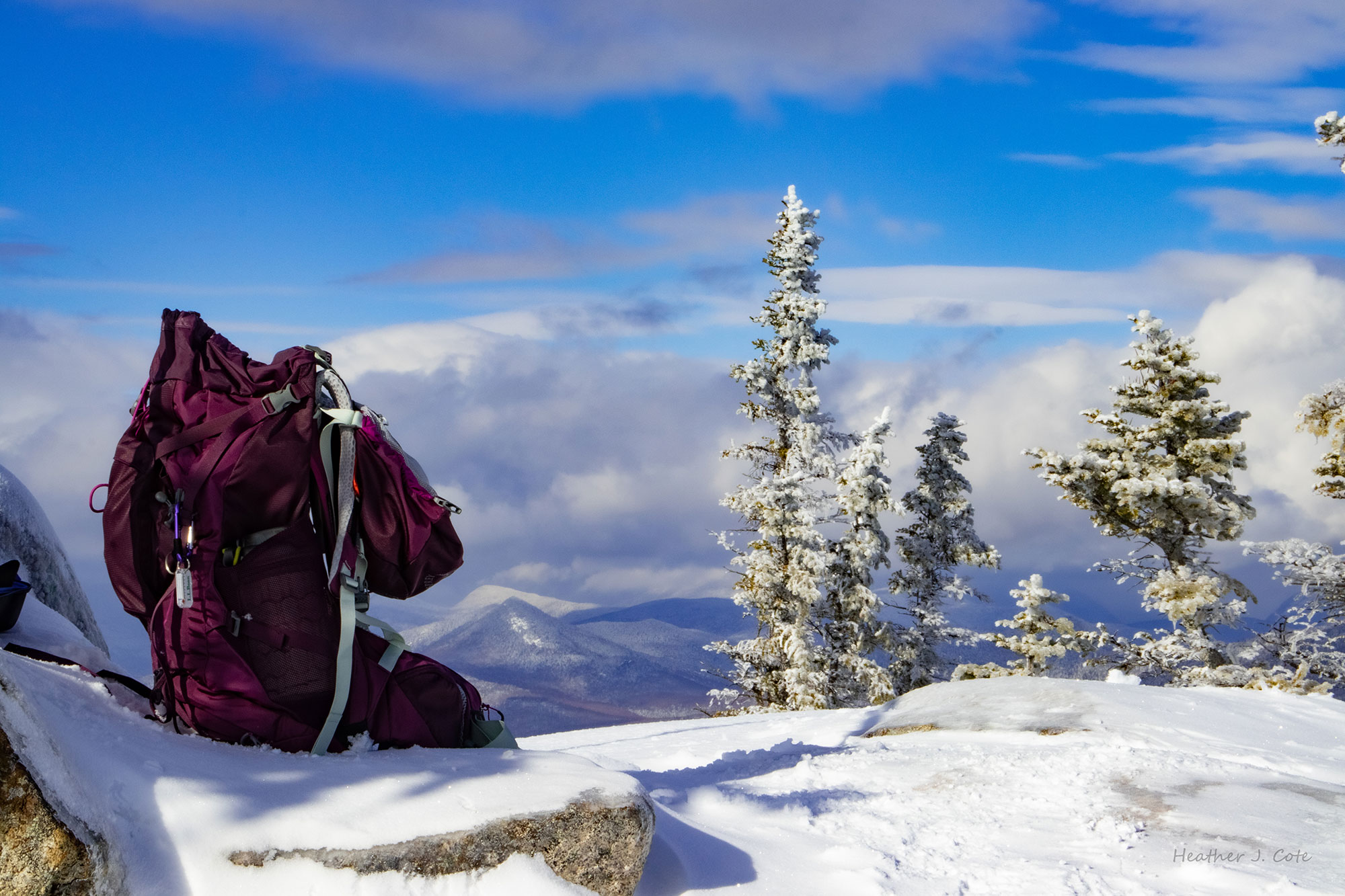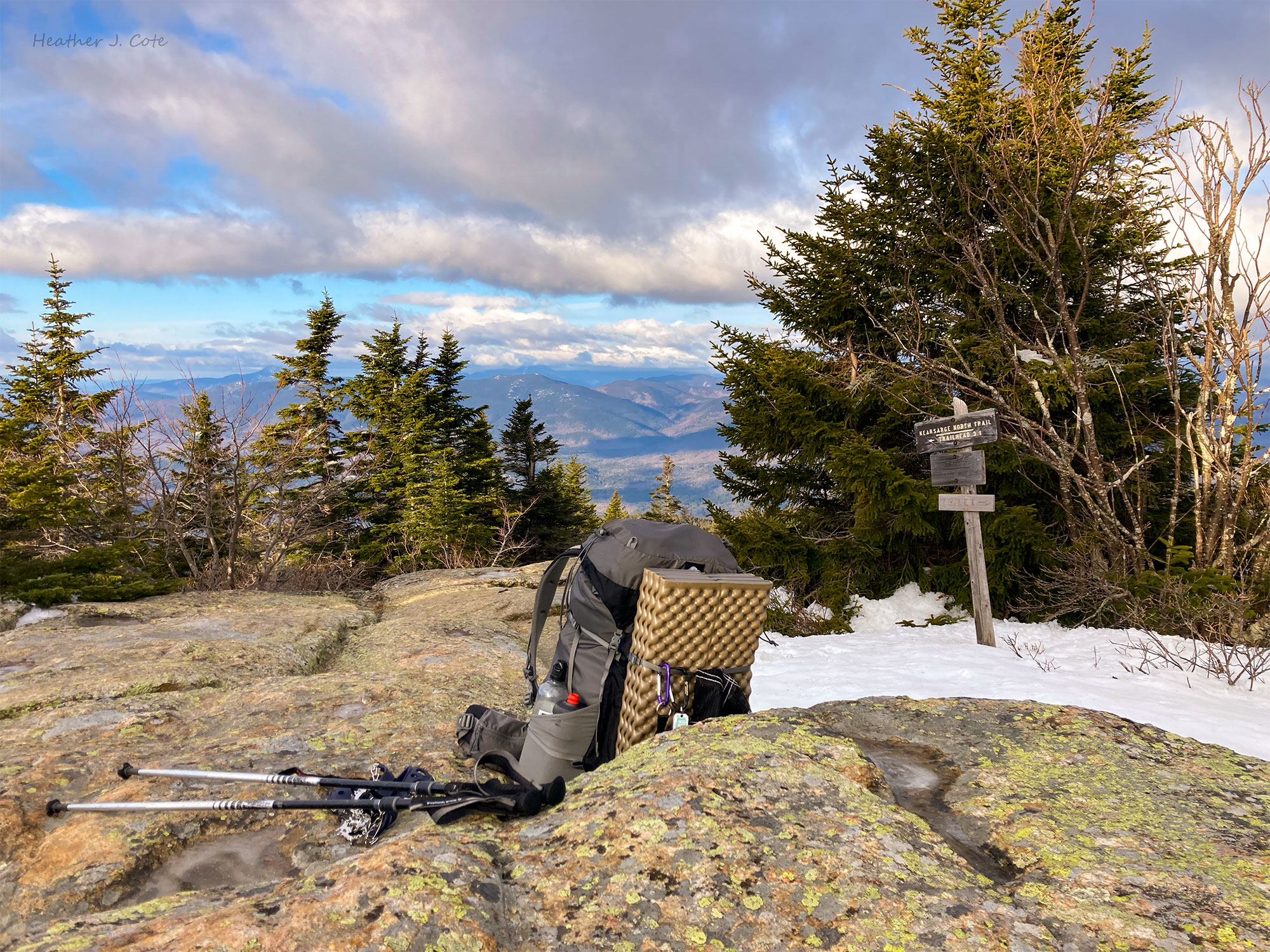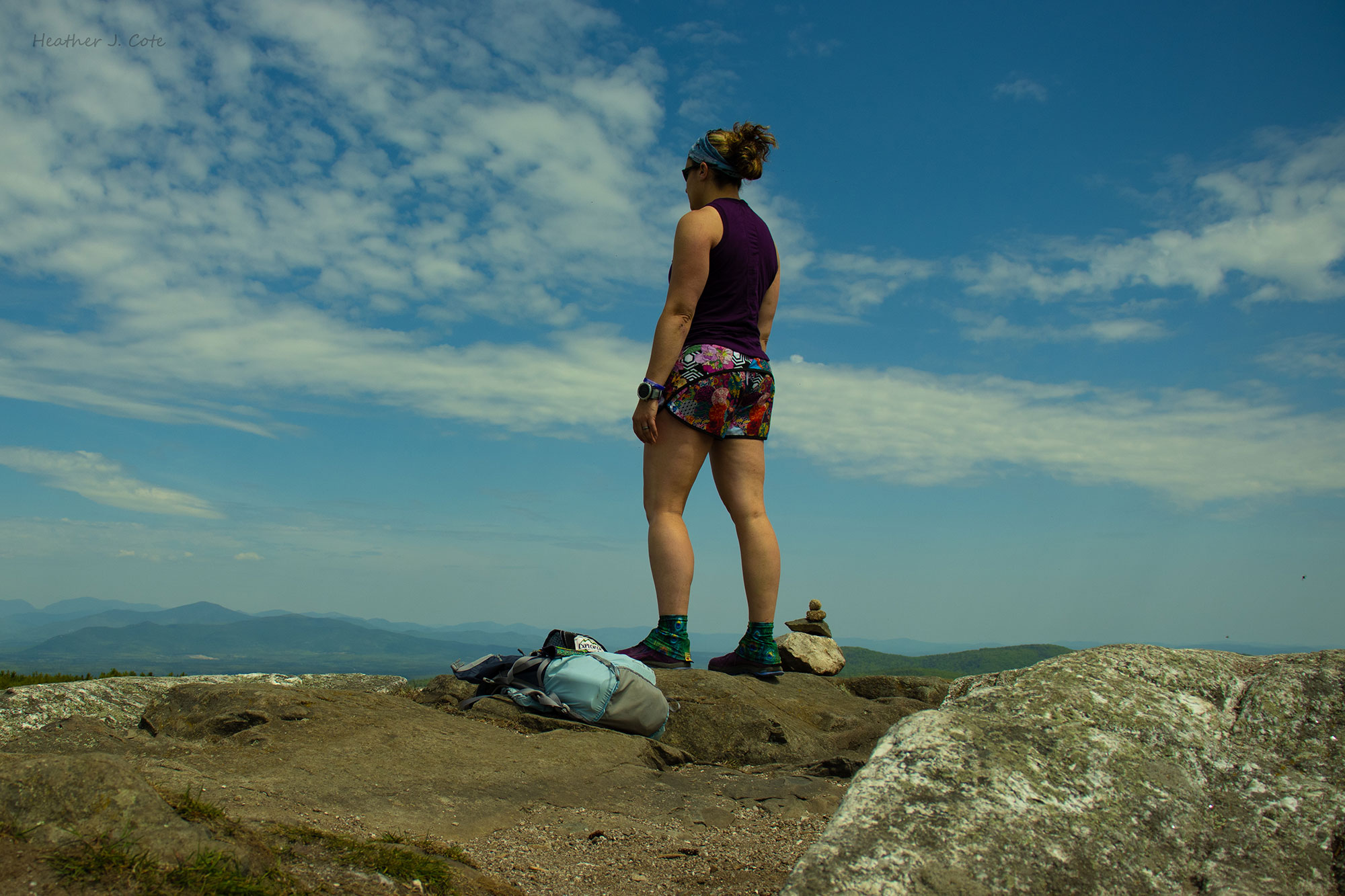Twenty years ago, I slipped into a large-capacity overnight backpack for the first time. It was borrowed. In fact, nearly everything in it was borrowed as well. The only items inside that belonged to me were clothes…well some of them were mine. That first backpacking trip took my wobbly legs to the top of Mount Moriah. I slept outside in a backcountry campsite for the first time, knowing absolutely nothing about gear, packs, or backcountry safety. I was completely at the mercy of my hiking partner and I am forever grateful for that first exposure.
My interest in hiking and backpacking flourished over time, bringing me to the present day and my overly-stuffed gear closet. Over time, I learned the most valuable pieces of gear in that closet include my hiking packs. Yes, I said packs. As a four-season hiker, my gear is as diverse as the New England seasons. The following is a rundown of hiking pack considerations, along with some suggestions, to accommodate four-season gear and adventuring.

A Backpack for Winter
Starting with the season that poses the biggest challenges when it comes to the amount of gear required to stay safe, my go-to pack is a 60L overnight pack with a “brain,” multiple lashing points, and generous exterior pockets. When venturing into the Whites, even on a bluebird winter day, you will find a low-temperature-rated sleeping bag, foam pad, snowshoes, microspikes, additional layers, extra food (my friends joke that I carry enough snacks for a week!), cook system, and much more in my pack. I take the 10 Essentials of Hiking, plus some, seriously. This level of preparation requires a pack that carries a heavier load with comfort. I find lashing points invaluable to bringing along snowshoes. Despite a packed-out monorail, it’s important to bring the snowshoes for a ride, as drifts can be often found at higher elevations. Monorail conditions change with the weather too. I use the Granite Gear Crown2 60 Pack for winter adventures. The Osprey Atmos AG 65 or Osprey Aura AG 65 are great options too. The Osprey packs have a separate compartment for a sleeping bag, which is a great feature!

Spring and Fall
I put both of these seasons in the same category, as they are affectionately known as the “shoulder season.” In New England, a seasoned hiker knows this means to be prepared for anything mother nature may throw at you! Cold wind—check. Melting, rotted monorail—check. Ice in between the rocks—check. Spring and Fall require a bit of extra gear to ensure safety. I usually skip the winter sleeping bag in lieu of a bivy sack and a lightweight down quilt or blanket. You will always find Microspikes and extra layers in my pack. I always carry rain pants and shorts too. One never knows what they will actually find up high as the mountain forecast is simply a guideline for planning. I try to stay lighter and comfortable, within reason, during the shoulder season by choosing a pack between 30 and 45 liters. Check out the Gregory Jade 38 Pack or the Osprey Men’s Manta 34 Pack.

Summer
This is my favorite season for light and fast! I have found it possible to pack light enough, with the important essentials, for a full day in the mountains. As an avid fastpacker, keeping pack weight down on a nice day makes the experience better and recovery quick. This also allows me to stay light on my feet and keep my core body temperature down. My gear will still continue to include the 10 Essentials, but I typically only carry the bivy sack as a means of staying warm, should I need to hunker down or come across an injured or incapacitated hiker. Gloves and a hat can be found in my pack regardless of the season. I always carry a rain jacket and pants too. Light layers in combination work best, plus take up less space. Packs between 20-35 liters fit summer gear the best. If you intend to move fast, consider purchasing a pack with a waist belt or strap to reduce bounce. Options include the MOUNTAINSMITH Scream 25 Backpack and the Deuter Futura 24 Hiking Backpack.
In closing, I will always advise stepping up to a larger pack once you start to overstuff your smaller pack. Having a little extra room in your pack is best, as you may need a place to stash those layers you take off or a few extra snacks!
Heather Cote
Heather is a lifelong outdoors woman, exploring trails as a child and young adult on horseback. She transitioned to hiking, backpacking, and ultra running in the last 8 years and is eager to continue exploring. Her “playground” is the White Mountains of New Hampshire and trails throughout New England. When not exploring, she enjoys photography, writing, and spending time with her people and animals.




